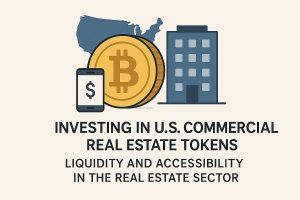Periods of high interest rates can be challenging for individuals and families trying to manage their finances effectively. High borrowing costs can impact everything from mortgages to credit cards, leading to increased financial stress. In this blog post, we will explore four strategies to help you save money during these turbulent economic times.
In this article, we will discuss ways to adjust your financial habits and investments to save money while interest rates are elevated. By understanding how to optimize your financial situation, you can not only weather the storm but also possibly enhance your financial position. Let’s dive into some practical and strategic ways to make the most of these challenging economic periods.
Adjust your spending habits

One of the most immediate strategies to cope with high interest rates is to scrutinize and adjust your spending habits. High borrowing costs mean that debt servicing can take up larger portions of your income, leaving less room for discretionary spending. It’s crucial to identify areas where you can reduce your expenditures without drastically affecting your quality of life.
Start by creating a comprehensive budget that outlines all your current expenses. Break these down into categories like essentials and non-essentials. Focus on finding opportunities to save in the latter category, such as dining out less frequently, canceling underused subscriptions, and opting for cheaper entertainment options. This disciplined approach will help you redirect funds to pay down debt or bolster your savings.
Reduce high-interest debt
Another critical step during periods of elevated interest rates is to focus on reducing high-interest debt. Credit card balances, personal loans, and other unsecured debts can become particularly burdensome when interest rates are high. Prioritizing the reduction of these debts can significantly lower your financial stress and improve your cash flow.
Begin by listing all your debts and their interest rates. Target the highest-rate debts first, as paying these down will free up more of your money each month. You can employ methods such as the avalanche method, which focuses on settling debts with the highest interest rate first while making minimum payments on the rest. This approach can save you money over time.
Increase emergency savings
Boosting your emergency savings is a prudent measure in times of economic uncertainty and rising interest rates. An emergency fund acts as a financial safety net, providing peace of mind and a buffer against unforeseen expenses without resorting to high-interest debt.
Start by setting a savings target, typically three to six months’ worth of essential living expenses. Automate your savings by setting up a regular transfer from your checking to a dedicated savings account, ensuring that your fund grows steadily without requiring constant attention.
Refine your investment strategy
High interest rates don’t just affect borrowing costs; they also influence investment landscapes. To safeguard and potentially grow your wealth during these periods, refining your investment strategy is essential. Taking a proactive stance can maximize returns and minimize risks.
Review your investment portfolio to determine how sensitive it is to interest rate changes. Assets such as bonds, particularly those with longer durations, tend to perform poorly when rates increase. Consider shifting to short-term bonds or other fixed-income securities that are less impacted by rate hikes.
Explore fixed-rate investments
In a high-interest economy, exploring fixed-rate investments could be a beneficial move. These investments can provide the security of predictable returns, irrespective of future fluctuations in interest rates.
Certificates of Deposit (CDs) offer fixed returns over specified periods and are generally safe vehicles to consider. They typically yield more than regular savings accounts, making them an attractive option if you’re looking for stability and steady growth. Always compare rates from different financial institutions to ensure you’re getting the best deal.
Consult a financial advisor
Sometimes, the complexities of navigating an environment of high interest rates require professional assistance. Consulting with a financial advisor can provide you with tailored advice that aligns with your personal financial goals and risk tolerance.
An advisor can provide insights into your current financial situation, highlight areas of concern, and suggest adjustments to your investment strategy. They can assist in creating both short-term and long-term financial plans to ensure you remain on track even amid economic upheavals.
Moreover, a financial advisor can keep you informed about changes in the economic environment, interest rate trends, and investment opportunities, helping you to make informed decisions. Don’t hesitate to seek expert guidance to optimize your finances and maintain your financial health during high-interest rate periods.



